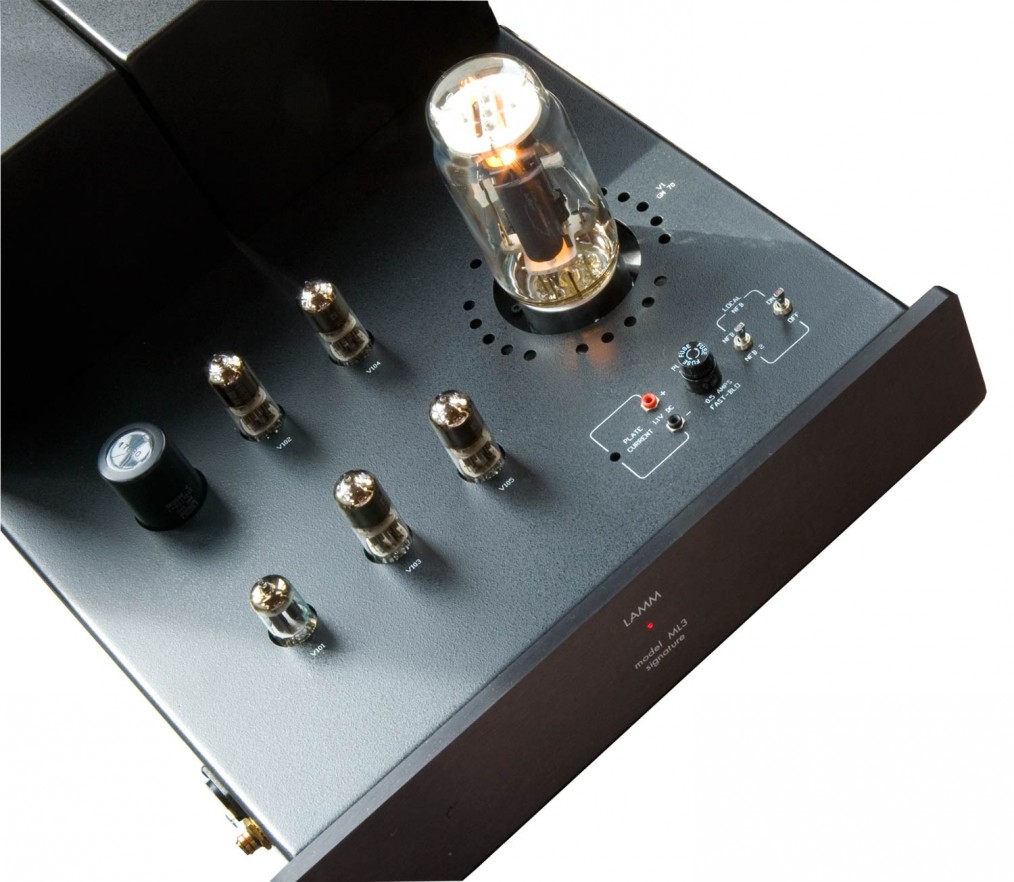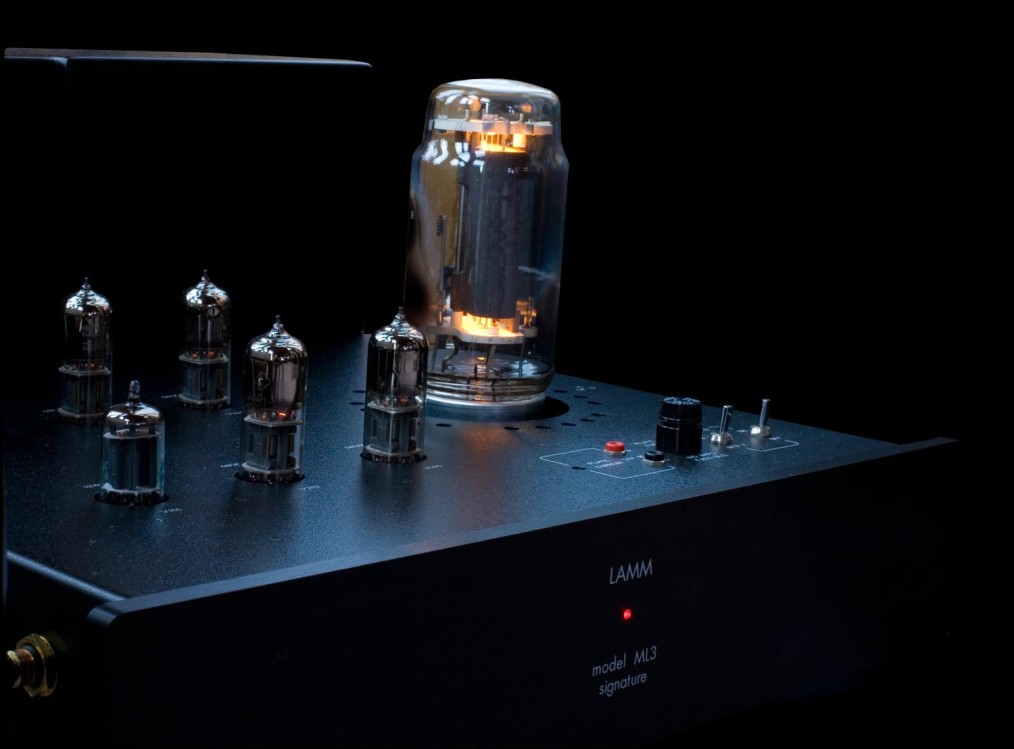[continued…]
8. The bass thing again
Then he says “…the solid-state’s fast, lean low-end attack, which is needed for the correct reproduction of amplified bass”.
Says who? God? [this first 2/3 of the review is really more a canon on how solid-state design must always be triumphant, a very public affirmation of Mr. Fremer’s [and seemingly J.A.’s] faith in solid-state sound forever, more a religious treatise than a review – people’s ears and musical health be damned]. I wonder if the fact that amplified bass guitars often use tube-based guitar amps bothers Mr. Fremer late at night or weakens his belief system the least little bit. Do you ever get the sense we are reading something out of Stereo Review from the mid 70s?
Again we are back to the bass. The ‘fast lean attack’. Which is all that most solid-state amps really can do, right? They attack the notes. Throw watts at this frequency and throw watts at that. The subtle variations in those attacks, at each harmonic? Oh, well, at least they attacked the note really well. The very best solid-state amps are very fast and very high-resolution, so they can kind of work by using a whole bunch of little attacks for each the note [with problems similar to that found with digital audio in that there seems to be a fundamental impedance mismatch with the analog harmonics being produced].
Ironically, the recent trend for solid-state amps seems to be that they should be smoother and notes should be more round sounding, [like their idea of tube amp sound, I guess], but they so far have been sacrificing resolution and harmonics in the process – resulting in a clumsy, low-resolution, and often atonal sound [piling on the irony: they sound a lot like old, old, legacy (think 60s and 70s) tube amp designs].
I, personally want the entire note myself; like an Oreo cookie, I want the cookie part [top and bottom, attack and decay] AND its wonderful chewy, creamy, tasty center. And I want to be able to savor the taste every single delicious crumb and sugar molecule [this is why I like being an audiophile better than eating, a couple of chews and the Oreo is GONE already].
In this system the Alexandria XLF’s absorb energy in the bass region more than other very large expensive speakers we have played with [but they are better than the X2]. It ain’t much, but enough to sort of dull the low frequencies a little. This is only a problem if this is what the listener is primarily interested in hearing [aka obsessed with]. To compensate for this weakness in the speakers [or any other component] one should use dynamics preserving vibration control [as opposed to vibration dampening tweaks that smooth out the system sound] like HRS under everything in the system [Mr. Fremer is using some HRS, not sure where it is in the system, nor if he has ever used their Nimbus, which have a giant effect on when one is pushing a system to its limits] and cables and power cords that preserve as much of the dynamics as possible.
Look, this is an expensive system. One usually has to spend a little more time and money to optimize around the specific characteristics of the system in order to tailor it to one’s own personal preferences. This is something system OWNERS almost always do and system REVIEWERS almost never do. The vast majority of reviews toss a superior or break-through component or speaker or cable into their system and then pretend to evaluate it, using associated equipment in the system left over from previous and up-coming reviews – NO MATTER HOW INAPPROPRIATE THE GEAR IS in a system with such a superior component. This review is way, WAY better than most in this regard.
Mr. Fremer seems to be all about the [percussive-like] attack, and the overall dynamic extremes, liking things on the lean side in terms of harmonics and decay. This is doable, as described above [although I cannot currently think of a way to artificially dampen the decay more than is natural without harming other parts of the sound]. And then, after this is optimized, and over time, a person gets to enjoy things in the music that they had not immediately focused on. They get to enjoy all the tons and tons of intra- and inter-note dynamic shades that is not in-your-face but is actually in-the-music [it looks like Mr. Fremer is calling this ‘texture’ in this review. A good name for it].
The preternatural focus on, what seems to me to be the first 1/10 second of a note versus, say, the first 1/3 of a second is to my way of thinking very limited. Slam your fingers down on a piano keyboard. The first 1/10 of a second is more or less fairly well reproduced on most systems with speakers of decent efficiency and reasonable to average amplification/cabling/source. As a wild-eyed guess I’d say they were within 5-10% of real. The next part of the note though, where it reaches its maximum volume, very few systems get within, [what do you say, JL?] maybe 50%? And this is one of the areas where tubes kick solid-state amps butt, getting much closer to the truth when we actually use the ears to listen [as opposed to circa 1960-2013 measurements. There are models we can come up with to explain this, but that is something for late at night BSing. Stay tuned :-)].
9. Nicey Nice
The next paragraph has a nice compliment about the “naturalness of its [the amps] portrayal of instrumental attacks put it as close to … as I’ve heard from any amplifier” as well as pointing out again the “rich harmonic palette expected from tubes”.
10. BO-ring
He goes on the usual boring-ass reviewer-ish ‘first I listened to this and then I listened to that’ boring-ass part of the review that seems to be a boring-ass requirement for reviews these days. YMMV.
11. Finally to the actual review
Agree that the Wilson Alexandria XLF speakers baffle-free presentation is quite good and up there with the best of the baffled competition [Marten, Kharma, Magico, etc.] but still not in the same class as, of course, horns.
Agree that the amps are SUPERNATURALLY quiet.
Look, the amps are not about the immediate attack of a note. Not about the ‘rich harmonics’. They are about the BALANCE. They do everything really really well. That’s it. You do not have to sacrifice Sue [harmonic truth] to save Charlie [soundstaging]. Or whatever other trade-off one is usually forced to make.
Solid-state amps do the square-wave like notes thing better. The big Audio Note are richer harmonically [more colorful] and more midi- and macro-dynamic. The big VTL have more weight and slam. But this is the first amp that kind of just does what an amp is supposed to do. This amp does have the highest resolution [and texture] of any amp we have heard – but one can convince oneself that this is again, part of being well-balanced – of being the closest thing to straight-wire with gain.
11. Comparison to a similarly-priced solid-state amp
The next part of the review involves the JA-recorded music of a concert in a church; a concert that Mr. Fremer also attended.
He then goes on to describe the sound as played through the dCS digital stack. The weaknesses in the sound as described is as expected, given the current state of digital recording and playback [hey, but it *is* getting better].
He then goes on to describe the same music through the darTZeel NHB-458 amps. He describes the pluses and minuses of the sound on the darTZeel versus the ML3 in what seems to me to be the old secular insightful Mike Fremer manner. I want to highlight one part of this comparison though, because it comes into play again in his conclusions [we’re almost there! :-)].
This is that “… the double bass was more like I heard live, with greater control and authority, a tighter physical presence, and better delineation of the instrument for the reverberant space”.
First, notice again how Mr. Fremer focuses on the strength and magnitude of the dynamics when talking about ‘how things sound live’. There are other things to music than dynamics [although, let’s admit, Impressive(tm) dynamics from a double-bass is awesomely cool and one of the first things we learn to enjoy when we have speakers with bass].
Second, when you take a track like this, something that has a good bass track, around at shows [when they used to let you play you own music tracks at shows – now it is mostly laptop junk], you get to hear the bass sound strong and POWERful on one system and weak and washed out on another and tuneful and dry and everything in-between.
So… what does the recording REALLY sound like? One wonders.
Many times stronger more powerful dynamics just means that the available power available to an amp is going to support the loudest notes, short-changing the ambient quieter notes. Many cables do this. Most conditioners do this. But, you know, its funny but a lot of people LIKE this effect; it can be really enjoyable. I enjoy it. Sometimes. I would hate to be saddled with it all the time though. I like it maybe, oh, 1 or 2% of the time or so. Good reason to go to shows is to hear this effect :-).
But back to this review [I keep getting side-tracked! Argh.]
[to be continued…]



